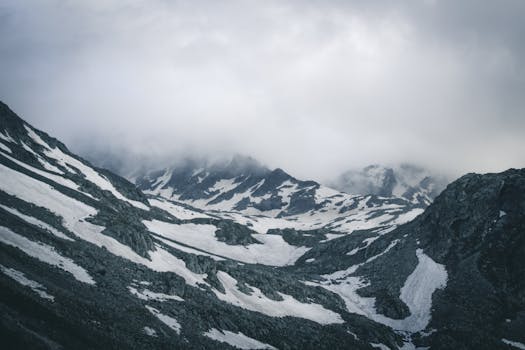Exploring the Grand Canyon
The Grand Canyon, a natural wonder of immense beauty and geological significance, offers an unparalleled experience for visitors. Its vast expanse stretches over 277 miles, with depths reaching over a mile, showcasing millions of years of Earth's history through its layered rock formations. Whether you're an avid hiker, a photography enthusiast, or someone simply looking to marvel at its grandeur, the Grand Canyon has something for everyone.
Beyond its breathtaking vistas, the Grand Canyon is a haven for outdoor activities and exploration. From white-water rafting in the Colorado River to hiking along the rim trails and venturing into the canyon's depths, there are countless ways to immerse yourself in this natural marvel. Each season presents unique opportunities to explore different aspects of the canyon, making it a year-round destination.
Exploring the Grand Canyon also means delving into its rich cultural history. The area is home to several Native American tribes, including the Havasupai, Hopi, Navajo, and Hualapai. Their deep connection to the land is evident in various historical sites and cultural experiences available within the park. Visiting these sites offers insight into the canyon's past and present significance to its indigenous people.
Geological Marvels
The Grand Canyon's geology is one of its most fascinating features. The rock layers visible in the canyon walls tell a story that spans nearly two billion years. According to geologists, the oldest rocks at the bottom of the canyon are known as Vishnu Schist, which dates back approximately 1.7 billion years (National Park Service).
These layers provide a unique window into Earth's history. For instance, the Tapeats Sandstone layer contains fossils that offer clues about ancient marine environments. The Bright Angel Shale reveals traces of early life forms like trilobites. This geological diversity makes the Grand Canyon a valuable site for scientific research and education.
The formation of the canyon itself is attributed to erosion caused by the Colorado River over millions of years. This process has created intricate rock formations and stunning vistas that attract millions of visitors annually. Understanding these geological processes enhances our appreciation of this natural wonder.
Activities for Every Adventurer
There is no shortage of activities for visitors to enjoy at the Grand Canyon. For those looking to explore on foot, numerous hiking trails cater to different skill levels. The South Rim is home to some of the most popular trails, such as the Bright Angel Trail and South Kaibab Trail. These trails offer spectacular views and a chance to experience the canyon's diverse ecosystems.
If you prefer water-based adventures, consider rafting down the Colorado River. Guided rafting trips range from half-day excursions to multi-day journeys that take you through some of the most remote and beautiful parts of the canyon (National Park Service). This experience provides a unique perspective of the canyon's towering walls and rugged terrain.

For those interested in learning more about the area's history and culture, ranger-led programs are available throughout the year. These programs cover topics ranging from geology and ecology to Native American history and cultural heritage. Participating in these programs can enrich your visit by providing deeper insights into what makes the Grand Canyon so special.
Seasonal Considerations
The Grand Canyon offers distinct experiences depending on when you visit. Summer is peak tourist season, with warm temperatures and long days perfect for exploring. However, it can also be crowded, especially at popular viewpoints like Mather Point.
Spring and fall are ideal times to visit if you prefer milder weather and fewer crowds. During these seasons, daytime temperatures are comfortable for hiking, and you can enjoy vibrant foliage in autumn or blooming wildflowers in spring.
Winter visits offer a completely different experience. The North Rim closes due to snow from mid-October to mid-May, but the South Rim remains accessible year-round (National Park Service). Winter brings a serene beauty with snow-dusted landscapes and quiet trails.
Cultural Significance
The Grand Canyon holds significant cultural importance for several Native American tribes who have lived in and around the area for centuries. The Havasupai people reside within the canyon itself, maintaining their traditions and way of life despite modern challenges.
The Hopi tribe considers certain locations within the Grand Canyon sacred sites linked to their origin stories. Visitors can explore these cultural connections through exhibits at park visitor centers or by participating in guided tours that highlight indigenous perspectives.
Engaging with these cultural experiences not only enriches your understanding of the Grand Canyon but also fosters respect for its ongoing significance to Native American communities.
Practical Tips for Your Visit
| Tip | Details |
|---|---|
| Plan Ahead | Make reservations for lodging or camping well in advance, especially during peak seasons. |
| Stay Hydrated | The arid climate can lead to dehydration quickly; carry plenty of water with you. |
| Wear Appropriate Clothing | Dress in layers to accommodate temperature changes throughout the day. |
| Respect Wildlife | Avoid feeding or approaching animals; observe them from a distance. |
| Leave No Trace | Follow principles of Leave No Trace by packing out all trash and minimizing your impact on natural areas. |
A Memorable Experience Awaits
The Grand Canyon offers an experience unlike any other place on Earth. Its stunning vistas, rich geological history, diverse activities, and cultural significance make it a must-visit destination for travelers from all walks of life.
Whether you're planning your first visit or returning for another adventure, there's always something new to discover at this remarkable natural wonder. By respecting its beauty and understanding its importance, we can ensure that future generations will also have the opportunity to explore and appreciate the grandeur of the Grand Canyon.